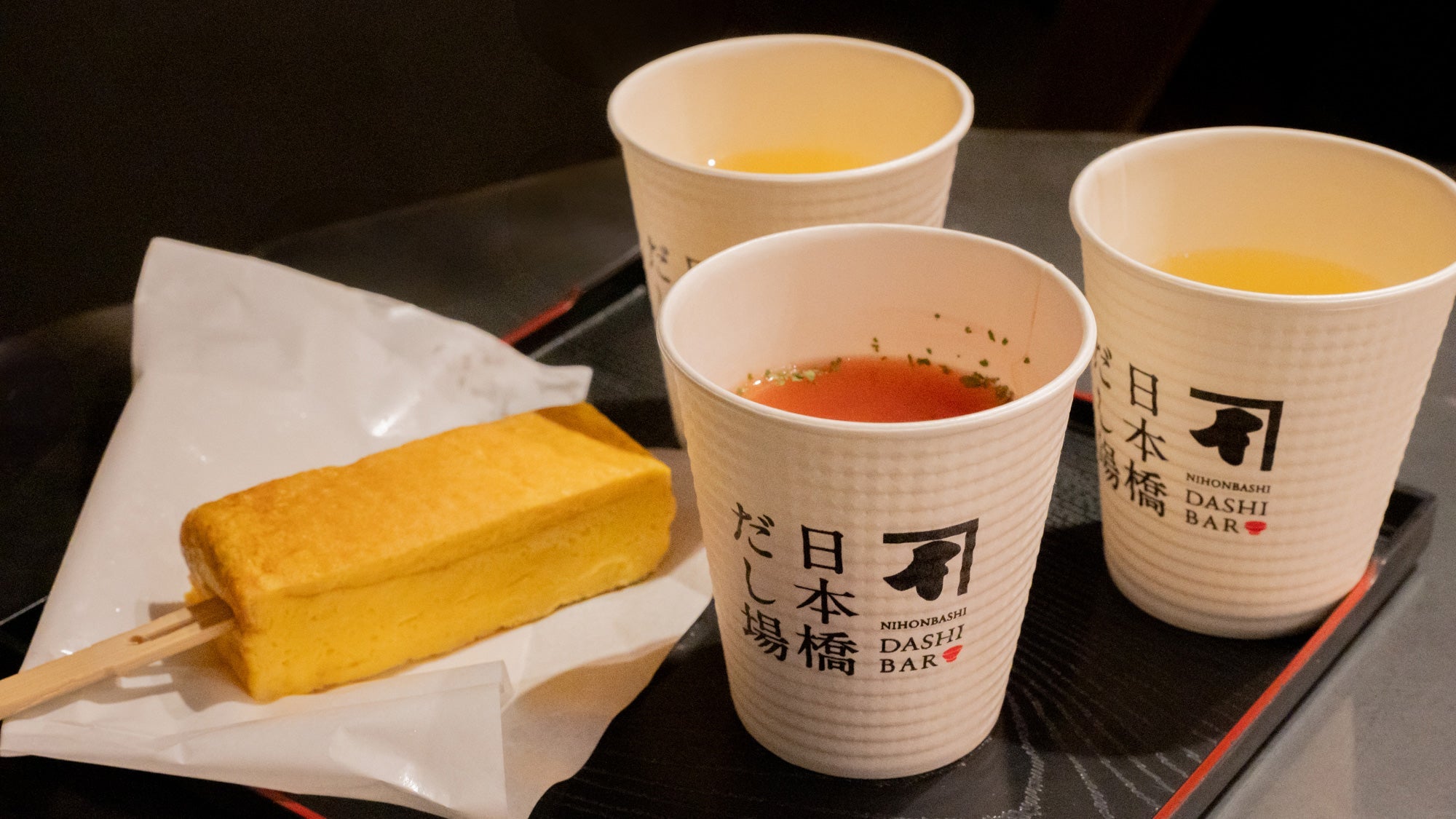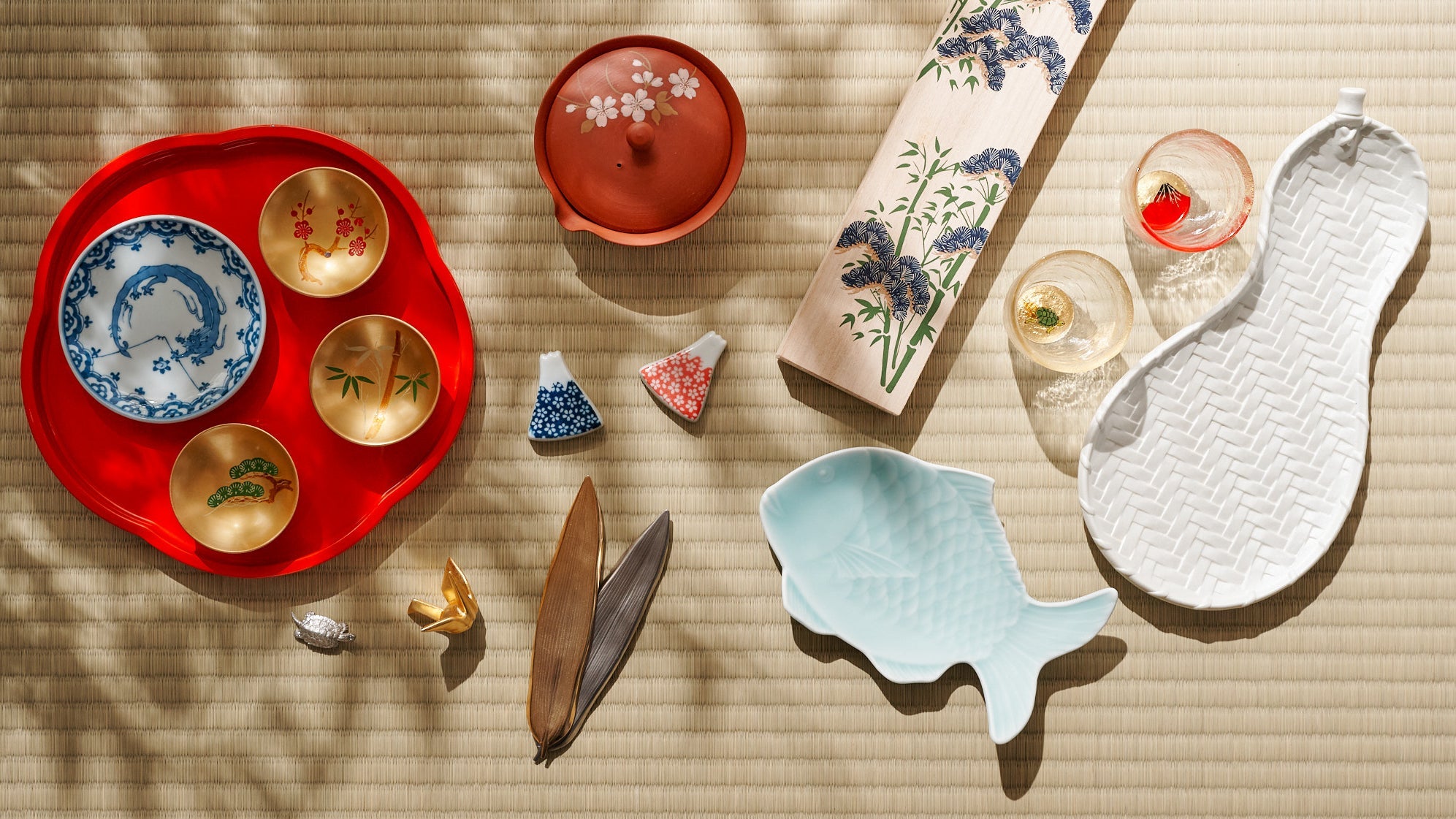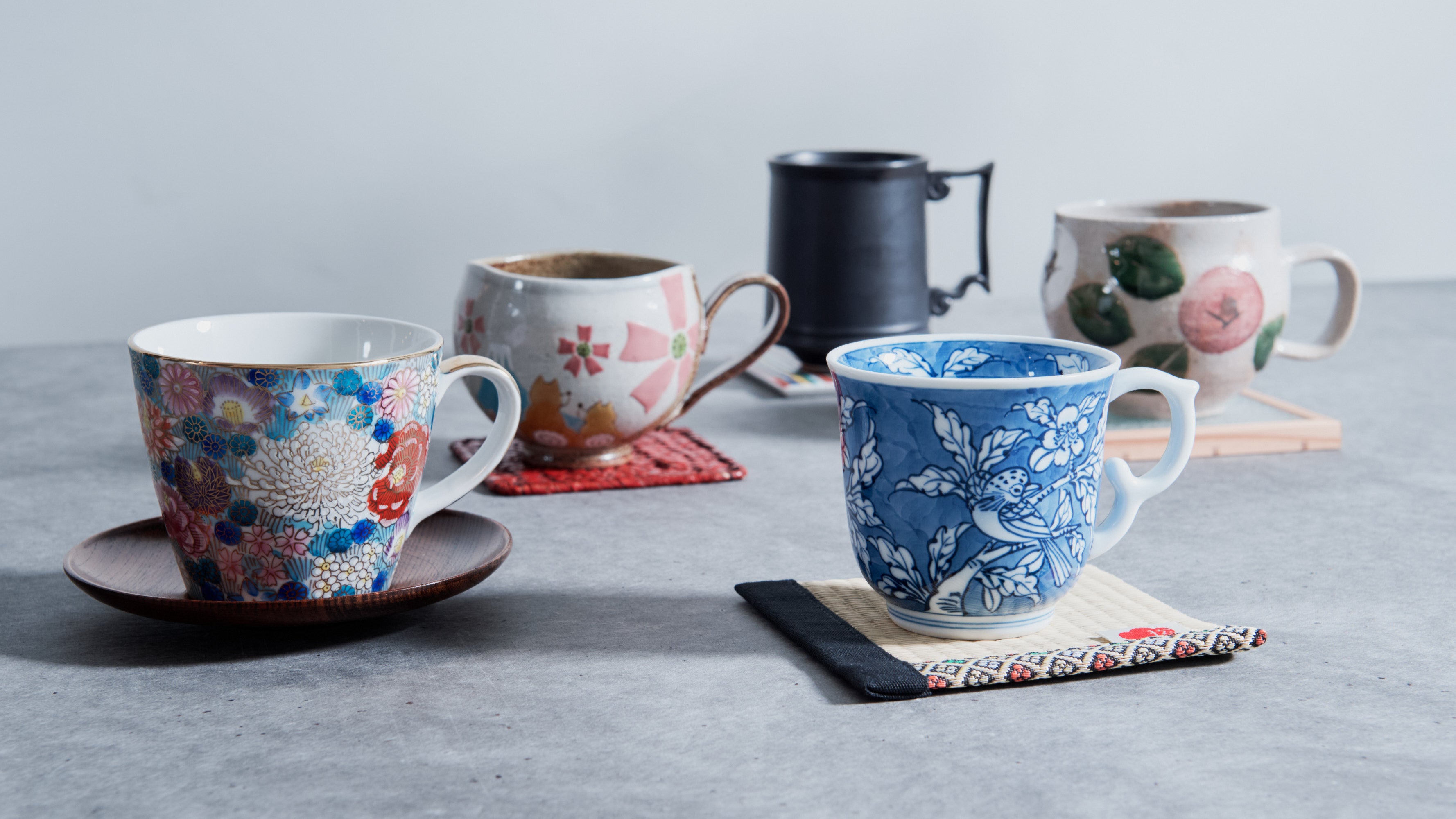
Dive into the Umami Wonderland of Dashi Soup
Written by Team MUSUBI
Japanese soup stock, known as dashi, is a clear broth created by gently heating katsuobushi (bonito flakes), kombu or konbu (kelp), or both in water to release their rich umami. It’s the heart and soul of washoku, or traditional Japanese cuisine.
This incredible broth plays a central role in enhancing the flavor and aroma of dishes while bringing out the natural savoriness of the ingredients.
There are five main types of dashi, depending on the ingredients used:
- Katsuobushi (bonito flakes) dashi
Kombu (kelp) dashi
Dried sardine dashi
Dried shiitake mushroom dashi
Combinations of two or more of the above
Katsuobushi dashi is used in a wide variety of dishes, including miso soup, noodle soup, and simmered dishes. Depending on the dish, selecting the right type of bonito flakes from among many varieties is key.
Team Musubi visited the long-established katsuobushi specialty shop “Ninben” in Nihonbashi—just a short walk from Tokyo Station—to explore the world of bonito flakes and dashi broth.

Table of contents
Miso Soup at the Dashi Bar?
Ninben is a well-known name in Japan, famed for its authentic bonito flakes. The company was founded in 1699, when its founder started selling dried bonito flakes and salted fish at a street stall in Nihonbashi.
Their flagship location, the Nihonbashi Dashi Bar, opened in 2010 and brings the flavor of freshly shaved katsuobushi to life. Based on the concept of “one soup, one meal,” the bar offers take-out dishes made with dashi, prepared from freshly shaved flakes. Next to the dashi bar, there is also “Ninben Nihonbashi Main Store,” which sells katsuobushi and related products.


Bonito flakes are a staple in Japanese cuisine and are most often used to make delicious miso soup. When combined with miso paste, the umami from the dashi intensifies the soup’s richness and depth, making it a comforting dish for both body and soul. And best of all, it goes very well with steamed rice.
The Nihonbashi Dashi Bar is your go-to spot for savoring miso soup made with this exquisite broth. Along with miso soup, you can enjoy a classic dashi soup.

Team Musubi tried the dashi soup and it was absolutely delicious. When I had a sip of the dashi soup, I was delighted to discover its delicate flavor. Just by adding a little salt to it, the flavor changed completely and I could taste the strong umami coming to the forefront. And when I added a touch of soy sauce, it was like magic—the flavor changed dramatically, elevating the soup to a whole new level of deliciousness. This dashi soup is a true culinary adventure, where you can enjoy the changing flavors in every sip.

Okubo Miku, a sales staff member at the Nihonbashi main store, says, “One of the things that makes our dashi soup so special is that it’s made with bonito flakes freshly shaved from the finest dried bonito blocks—right here in our in-store factory almost every morning.”
These flakes have a stronger aroma, which makes them perfect for dashi. When you gently heat them in water, the umami is further augmented and the dashi soup becomes richer. It becomes a perfect comfort food.
According to Okubo, many nearby office workers, particularly women, enjoy stopping by the bar at lunchtime to enjoy the exquisite dashi soup.

When we visited around 2:00 p.m., the bar was still bustling. Women were enjoying takikomi gohan (rice cooked with dashi) and katsubushi gohan (rice topped with bonito flakes), while others ordered takeout. All three standing tables were full. On weekdays, it’s busiest between 11:00 a.m. and 2:00 p.m.
On weekends, it’s a different scene. Families and couples come in their droves, eager to try the dashi soup. Their regularly updated menu, with prices ranging from 150 to around 600 yen, offers something for everyone. And they offer bento boxes—perfect for a quick takeaway lunch!
Dashi soup remains a popular choice even after lunch hours. For those who like variety, they've also got Western-style soups like tomato or cream, made with the same high-quality dashi. I tried the tomato soup, which had a flavor reminiscent of bouillon. I also had the dashi-yaki egg made with dashi from the side menu, and it was a perfect snack with umami and a hint of sweetness.

Yumi Aida from the Public Relations and Advertising Group says, “The highlight of Nihonbashi Dashi Bar is the bonito dashi soup, which costs only 150 yen per cup. The idea of an unprecedented style of drinking dashi as a beverage has been well received since the store opened, and by 2022, the store has sold a total of one million cups.”
The Incredible Source of Dashi Broth—Katsuobushi
There are five types of katsuobushi that are freshly shaved into flakes, each with its own unique flavor and character. These are carefully selected from five production areas: Tosashimizu (Kochi Prefecture), Makurazaki (Kagoshima Prefecture), Ibusuki (Kagoshima Prefecture), Izu (Shizuoka Prefecture), and Yaizu (Shizuoka Prefecture), although Yaizu is currently unavailable. These regions are said to be Japan’s major katsuobushi producers, and each area has its own unique flavor.
Aida explains that the quality of dried bonito varies by region, making it a connoisseur’s delight. Skilled craftsmen sort more than 500 pieces of dried bonito daily to ensure top quality.

Store clerk Okubo explains that the flavor and aroma differ depending on the region of production, so it's best to choose the one based on the cooking purpose.
“The dried bonito produced by Mr. Miyashita in Makurazaki has a delightfully smoky aroma because it is strongly smoked. Also, their bonitos are caught in the waters surrounding Makurazaki, where the plankton the bonitos eat has a low fat content, allowing dashi to have a lighter flavor.

“On the other hand, Izu's tagobushi is made using the oldest double-drying method, called the ‘tebiyamashiki’ method. This method involves burning wood in a furnace, placing the bonito in a steamer on top of the furnace, and smoking it. Usually, the dried bonitos are exposed to a lot of wood smoke, resulting in a strong smoked aroma, but this dried bonitos are roasted with cherry wood, which allows it to have a more mellow aroma. I highly recommend it for making a clear soup.”
The Secret to Its Unparalleled Taste and Aroma
When it comes to the major production areas of dried bonito, Kagoshima Prefecture in the south of Japan, particularly Makurazaki and Yamakawa, takes the top spot. Shizuoka Prefecture, especially the city of Yaizu, ranks second. Together, these two prefectures account for 99.4 percent of katsuobushi production in Japan. Bonito fishing has been a long-standing tradition in these areas, and it's no surprise that it led to the creation of dried bonito, a method developed to preserve these delicious fish.
Let’s look at two types of dried bonito based on the production methods: One is simple dried bonito called arabushi, which has undergone the process of smoking and drying with heat, and the other is fermented dried bonito, or karebushi, which has undergone the extra process of molding and sun-drying over two times.
Making arabushi takes about one to two months, while honkarebushi, which undergoes more than four cycles of mold cultivation and sun-drying, is produced over a period of 150 to 180 days.
The molding and sun-drying stages are where the transformation happens—these steps concentrate the umami of the fermented bonito, creating a rich and elegant aroma that sets karebushi apart from arabushi. The resulting soup broth is just as delightful!
Choose the Right Bonito Flakes for Your Next Meal
The aroma and flavor of the dashi soup also vary depending on how dried bonito is shaved, each offering its own unique flavor profile. There are mainly three types of shavings.
For miso soup, it is recommended to use hira-kezuri (thin shavings), which is shaved into thin flower-like shapes.

For a fragrant and rich soup broth, Okubo recommends hana-gatsuo, which are shaved into a wide flower shape. Unlike other dried bonito, hana-gatsuo are not molded, which gives them a strong and smoky aroma. They are the perfect addition to miso soup and simmered dishes, making every meal a delight.
Soft flakes, which are shaved even thinner than thin flakes, are the perfect toppings for rice or hiya-yakko (cold tofu).

Bonito flakes shaved to a thickness of over 0.2 mm (about 0.008 in), known as atsu-kezuri, create a soup broth with a rich, deep flavor, making it perfect for noodle soups and simmered dishes. You can just eat them plain like beef jerky, because they’re just good!

Aida shares some tips for storing bonito flakes, saying, “Once opened, the flavor can deteriorate if stored at room temperature. To preserve their quality, place them in a sealable plastic bag and keep them in the refrigerator at 0–5°C (32–41°F). We conducted an experiment and found that flakes stored in the refrigerator retained their aroma far better than those kept at room temperature or even in the freezer.”
How to Make Ichiban Dashi
There are four main ways to make dashi using katsuobushi: ichiban dashi (first dashi), niban dashi (second dashi), atsu-kezuri dashi (dashi made with thickly shaved flakes), and awase dashi (a combination of bonito flakes and kelp). Ninben introduces the simplest method for making ichiban dashi, which is known for its rich taste, pleasant aroma, and elegant amber color. It’s perfect for soups, miso soup, steamed egg with dashi soup, and more!
Ingredients (makes about 4 cups / 27 fl oz of dashi):

- Katsuobushi: 30 g (about 1 oz)
Water: 1,000 ml (about 4¼ cups or 34 fl oz)
1. Pour the water into a pot and bring it to a boil. Once boiling, turn off the heat.

2. Add the katsuobushi and let it steep for about 1 minute without stirring, as stirring or pressing the flakes can release unwanted bitterness.

3. Set a colander over a bowl and line it with kitchen paper or a clean piece of cheesecloth or muslin or cheesecloth (avoid using regular fabric, which may leave residue), then slowly strain the flakes.

4. You’ll get approximately 800 ml (about 3⅓ cups or 27 fl oz) of clear dashi.

The leftover flakes can be lightly sautéed with soy sauce and used as a savory topping for rice.
How to Store
Dashi is best enjoyed fresh, so use up the broth as soon as you can. If you want to use the soup broth for dinner or breakfast later, it’s best to store it in a jar in the refrigerator. Another option is to store it in the freezer. If you freeze it, use an ice maker that allows you to freeze it in small portions to make the soup broth evenly thick, and use it up within two weeks.
How to Make Katsubushi Gohan (Bonito Flakes over Rice)
We also learned how to make katsubushi gohan, a simple yet flavorful dish that brings out the natural umami of bonito flakes. This is one of the recipes offered at the Nihonbashi Dashi Bar—and it’s incredibly easy to make! You can even add a bit of wasabi, just like Team Musubi did at Tokyo Wasabi, a wasabi farm. It gives the dish an extra kick of flavor.

Ingredients (serves 1):
- Warm cooked rice: 1 bowl (about 150 g / 5.3 oz)
Katsuobushi (special thin flakes for rice): 3 g
Soy sauce: 2/3 teaspoon
1. Place the warm rice in a bowl.
2. Sprinkle the bonito flakes evenly over the top.
3. Drizzle the soy sauce over the flakes.
That’s it! Simple, quick, and packed with umami. Try it with a small amount of fresh wasabi for a beautifully balanced flavor.
If you want to try dashi soup or bonito flakes, you should visit the Nihonbashi Dashi Bar. You'll also be amazed by the incredible old architecture around the store, many of which were built in the Showa era (1926–1989CE). Check out the Bank of Japan's main branch, which has been designated as an important cultural property, and the Mitsui Memorial Museum, which exhibits a collection owned by the Mitsui family, whose history spans roughly 300 years. The best part is that you can enjoy authentic Japanese food alongside beautiful modern and historical architecture.
Since it’s close to Tokyo Station, we also encourage you to stop by Otonami Lounge Tokyo, where you can see and experience the craftsmanship of MUSUBI KILN.
Nihonbashi Dashi Bar
1F, COREDO Muromachi1 2−2−1, Muromachi, Nihonbashi Chuo-ku, Tokyo








Leave a comment
This site is protected by hCaptcha and the hCaptcha Privacy Policy and Terms of Service apply.